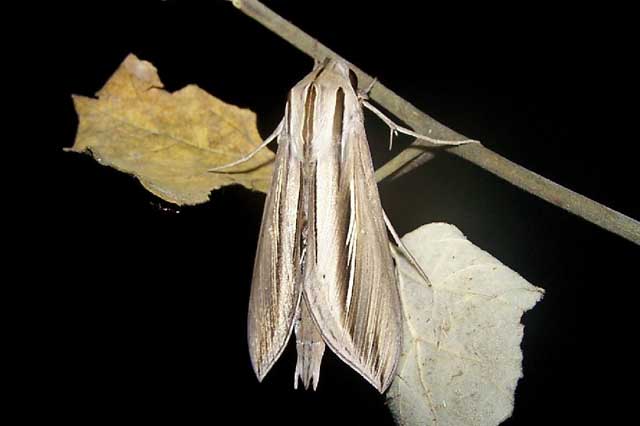
Phryxus caicus, Paraguay, PYBIO.
This site has been created by Bill Oehlke.
Comments, suggestions and/or additional information are welcomed by Bill.
TAXONOMY:
Family: Sphingidae, Latreille, 1802 |
|
|
Updated as per http://www.pybio.org/MACROGLOSSINAE.htm (Paraguay), November 2007 Updated as per personal communication with Vladimir Izersky (Peru: Junin: Coviriali, 662m, February), December 2008 Updated as per The Known Sphingidae of Costa Rica, November 2007 Updated as per personal communication with Jose Monzon (Guatemala); May 2009 Updated as per personal communication with Andres oscar Contrares (Pilar, Neembucu, Paraguay); May 2009 Updated as per AN ANNOTATED CHECKLIST OF THE SPHINGIDAE OF BOLIVIA, December 2009 Updated as per personal communication with Gregory Nielsen (Villavicencio, Meta, Colombia; February 24, 2011); March 24, 2011 Updated as per "A Hawk Moths fauna of southern Maranhao state, Brazil, ... "; NEVA: Jahrgang 34 Heft 3 November 2013; via Jean Haxaire; April 5, 2014 Updated as per personal communication with Sergio D. Rios Dtaz in CATOLOGO DE LOS SPHINGIDAE (INSECTA: LEPIDOPTERA) DEPOSITADOS EN EL MUSEO NACIONAL DE HISTORIA NATURAL DEL PARAGUAY; sent to me in July 2014 by Sergio D. Rios Diaz. Updated as per personal communication with Ezequiel Bustos (Shilap revta. lepid. 43 (172) diciembre, 2015, 615-631 eISSN 2340-4078 ISSN 0300-5267), January 4, 2016 Updated as per personal communication with Ezequiel Bustos (Shilap revta. lepid. 43 (172) diciembre, 2015, 615-631 eISSN 2340-4078 ISSN 0300-5267), January 4, 2016 Updated as per Hawk-moths (Lepidoptera: Sphingidae) of Trinidad, West Indies: an illustrated and annotated list; Matthew J.W. Cock; April 2, 2022 Updated as per personal communication with Anna & Frank West (78mm, Frenza Rancho Grande, Rondonia, Brasil, November, 1991); April 24, 2022 |

This site has been created by Bill Oehlke.
Comments, suggestions and/or additional information are welcomed by Bill.
TAXONOMY:
Family: Sphingidae, Latreille, 1802 |
The Caicus sphinx, Phryxus caicus
(wingspan: 2 3/4 - 3 1/4 inches (7 - 8.3 cm)),
flies from southern | 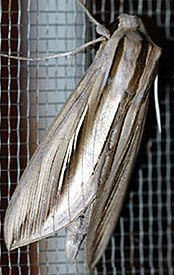
|
The abdomen of the Caicus sphinx has distinct black and tan bands. The upperside of the forewing is brown with a tan band along the inner margin and a thin tan streak in the middle of the wing. The upperside of the hindwing is red-orange with short black bands along the veins at the outer margin. Phryxus caicus (above-right), December 23, 2005, Misiones Province, near Puerto Iguazu, near light at night, courtesy of Oz Rittner.
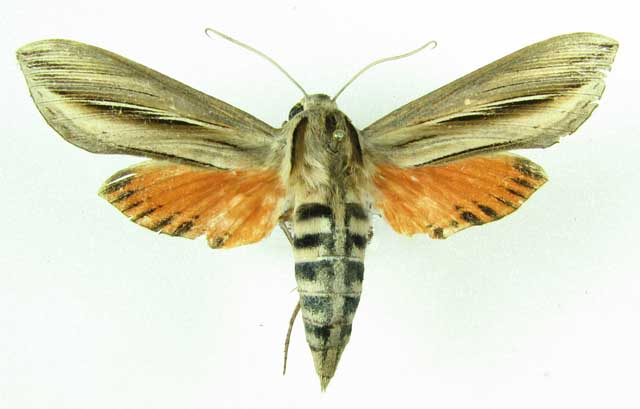
Phryxus caicus, Villavicencio, Meta, Colombia,
Km 13 via Acacias, 66mm, LFW=31mm, February 24, 2011, 500m, courtesy of Gregory Nielsen.
Sergio Rios Diaz confirms flights in Paraguay in January-February-March and May.
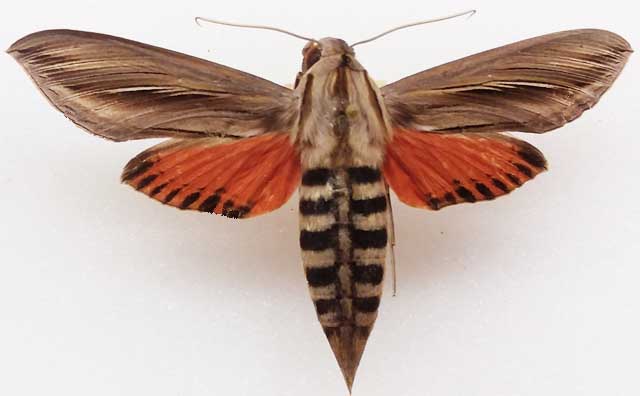
Phryxus caicus, 78mm, Frenza Rancho Grande, Rondonia, Brasil,
November, 1991, courtesy of Anna & Frank West
Moths eclose from pupae in fine silk cocoons spun up amongst leaf litter.
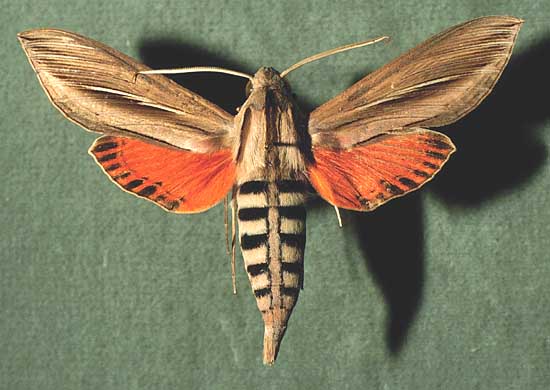
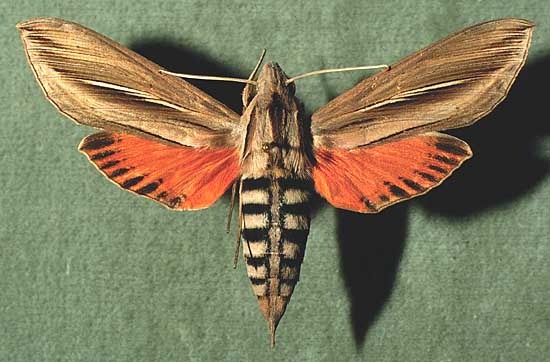
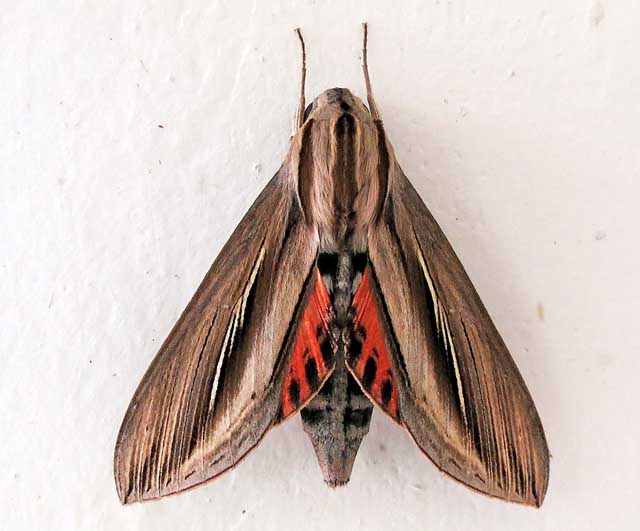
Phryxus caicus Villavicencio, Meta, Colombia,
November 3, 2014, 500m, courtesy of Gregory Nielsen.
Moths emerge in as few as fourteen days after pupation from a cocoon of very fine silk spun among leaf litter.


Return to U. S. A. Table
Return to Sphingidae Index
Return to Dilophonotini Tribe
Use your browser "Back" button to return to the previous page.
This page is brought to you by Bill Oehlke and the WLSS. Pages are on space rented from Bizland. If you would like to become a "Patron of the Sphingidae Site", contact Bill.
Please send sightings/images to Bill. I will do my best to respond to requests for identification help.
Enjoy one of nature's wonderments: Live Saturniidae (Giant Silkmoth) cocoons.
 Show appreciation for this site by clicking on flashing butterfly to the left. The link will take you to a page with links to many insect sites. |